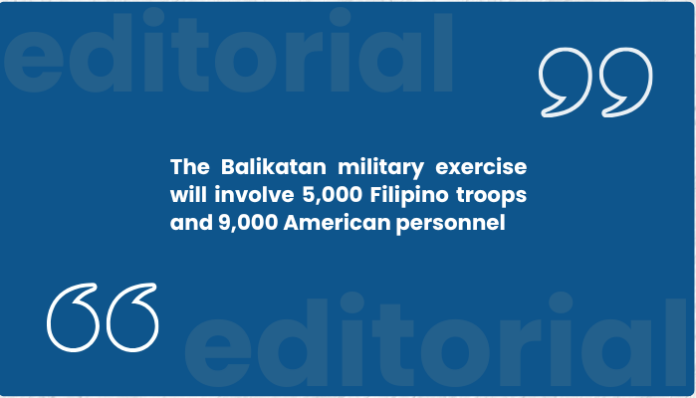CAN we rely solely on our own resources to defend the country from any foreign aggression or external threat?
At this stage in our socio-economic development, we need to give priority to fighting poverty and raising the quality of life of the poor and marginalized sectors and providing them with vital social services, including education and health.
We cannot afford to spend billions and even trillions of pesos for our defense requirements.
While we do need to raise enough funds on our own to purchase advanced military equipment to defend our shores.
We can already test and familiarize our military with state-of-the-art defense equipment from out treaty ally, the United States, for future use.
Washington has deployed the NMESIS or Navy-Marine Expeditionary Ship Interdiction System for use in the Philippines in the Balikatan exercises between Filipino and American troops being held from April 21 to May 5 in our western flank and near the country’s northern tip near Taiwan.
NMESIS is a highly mobile coastal antiship missile system designed to strike surface vessels from land-based positions. Its introduction as part of the current Balikatan exercises is as significant as the arrival of the midrange Typhon missile system in the country in April last year.
Despite initial pronouncements that its Philippine deployment would only be temporary, the Typhon system has remained on local soil.
This has prompted China, which has been threatening to invade Taiwan while also harassing Philippine vessels and fisherfolk in pursuit of its expansionist claims on the South China Sea, to call for the pull-out of the missile system, warning that its continued presence is raising the risks of geopolitical confrontation and an arms race in the region.
A NMESIS battery has already been set up in Cagayan province, one of the Balikatan sites this year. The NMESIS battery demonstrates the Trump administration’s intention to deploy advanced military assets to the Philippines and reestablish deterrence in the region in the face of growing Chinese aggression.
The Balikatan military exercise will involve 5,000 Filipino troops and 9,000 American personnel.
Last year’s exercises also saw more US troops participating—11,000—compared to only 5,000 from the host country. The exercises will also have 200 active participants from Australia, and international observers from 19 other countries.
The NMESIS—like the Typhon—is expected to remain in the country for future exercises.
We need advanced weapon systems such as this to serve as deterrence against foreign incursions and to assert our firm commitment to defend our national sovereignty and territorial integrity.








